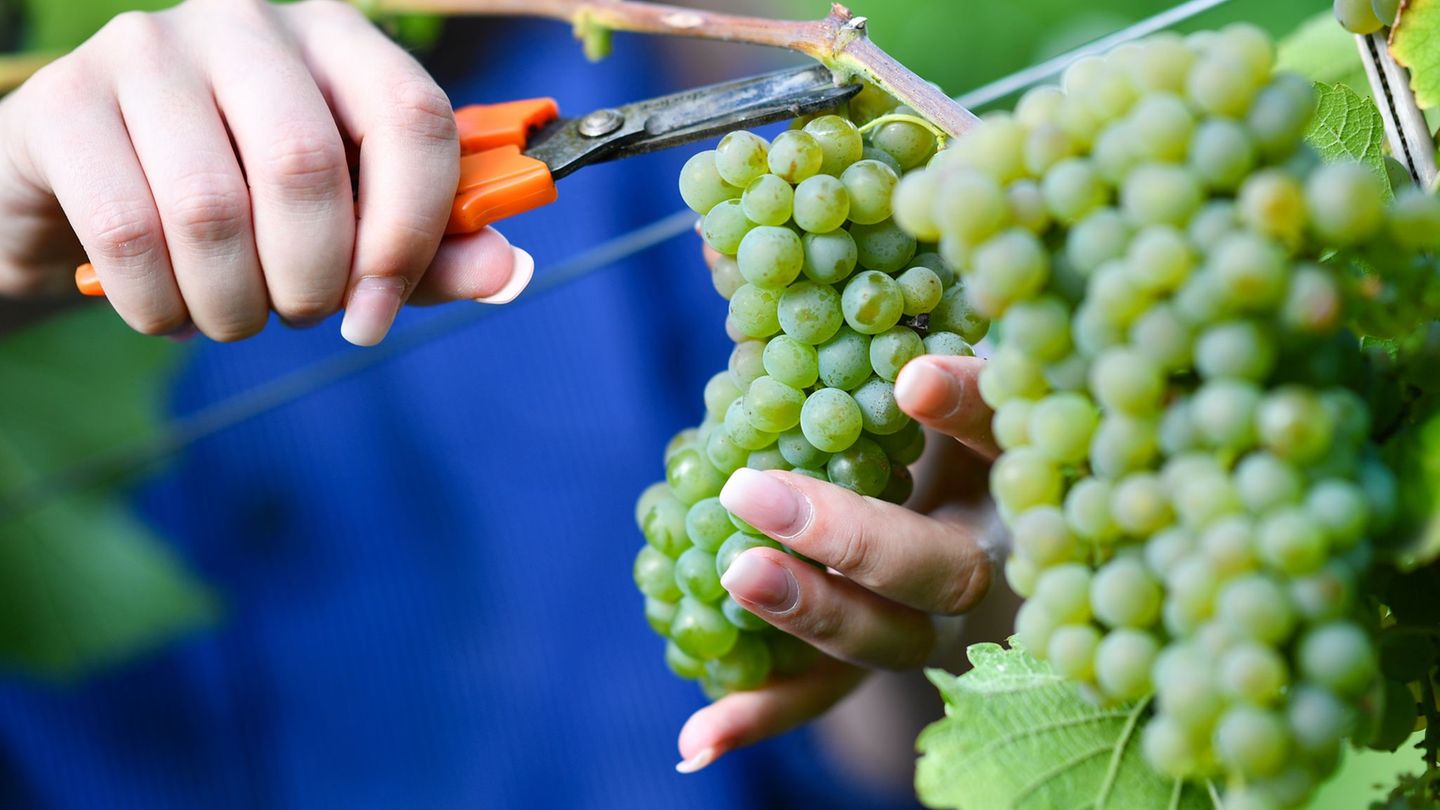Hefeta and high in the course
If you want to enjoy Federweißer, you have to hurry up
Copy the current link
Add to the memorial list
From Monday on, many winegrowers in the 13 German wine -growing regions go to the reading for Federweißer. The milky, cloudy drink has a short summer.
When the summer takes on again and the first grapes are harvested, a special time begins for winemakers – the Federweißer season. From Monday (August 18th), many winegrowers in the 13 German wine -growing regions take place in the early morning. The milky, cloudy drink is only a few weeks in stores, which is exactly what makes it appealing. If you want to enjoy it, you have to be quick.
Federweißer is considered a harbinger of a new vintage. No finished wine yet, but no more juice, rather an intermediate product: grape juice that is currently beginning to ferment. The fermentation starts right after pressing – yeast turns the sugar into alcohol and carbon dioxide.
Is filled before the process is completed. The fermentation continues in the bottle, which is why it is sold with special closures. They prevent dangerous overpressure: gas can escape, but air cannot penetrate.
The wine that is none yet
This is also why Federweißer is literally a living product. The yeast ensures a milky cloudiness that is considered harmless to health. On the contrary: it is rich in nutrients. Before pouring, you can swing the bottle calm so that nothing collects on the ground. Incidentally, the name is due to the yeast particles that “dance like feather”.
The fermentation can be broken in the fridge. If you want the full taste, you are waiting. And tastes. And wait. The lively drink between must and wine is required for patience – and a little willingness to experiment. The reminder is widespread that the sweetness is addicted to the alcohol content and that Federweißer can therefore be intoxicating faster than expected.
In terms of taste, the Federweißer is a chameleon, says connoisseurs: initially sweet as grape juice with a splash of carbonic acid, later increasingly dry, the further the fermentation progresses. Every day can bring a new note and sip a little surprise.
The trunk, which is also called “Rauscher”, has tradition, especially in German wine regions – from the Palatinate to Rheinhessen, the two largest German wine -growing areas.
Almost no autumn market or wine festival can do without it. For this purpose, regional structures have established themselves with large winery and filling companies. For winegrowers, he is also an instrument of customer loyalty. Neighboring countries – such as France or the Czech Republic – know similar drinks.
Which dishes match
And what do you eat? Very classic: onion cake. Or tarte flambée. Hearty dishes go perfectly with the sweet and sour note. There can also be a spicy cheese. In many places, for example in the Rhineland-Palatinate capital of Mainz, such food and drink is offered on Büdchen.
The most important thing: Federweißer tastes best in a convivial atmosphere, it is said. Because although he comes back every year, he remains a fleeting guest. One who attracts tingling and then moves on – until the next late summer.
dpa
Source: Stern




